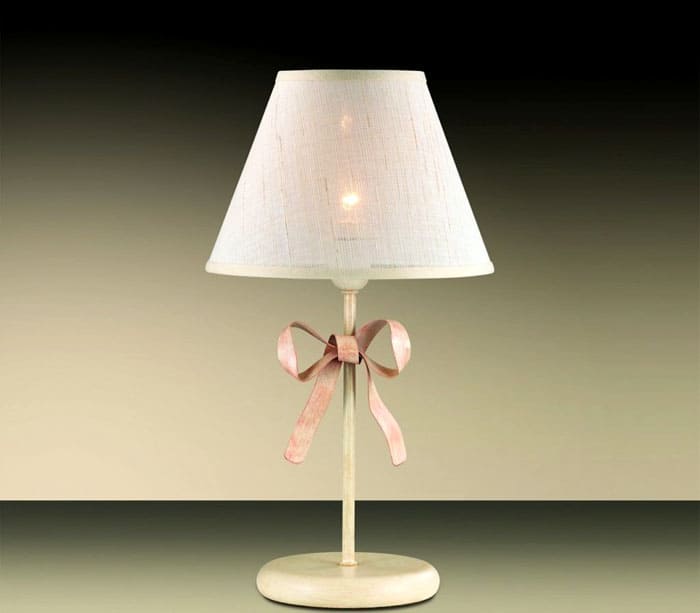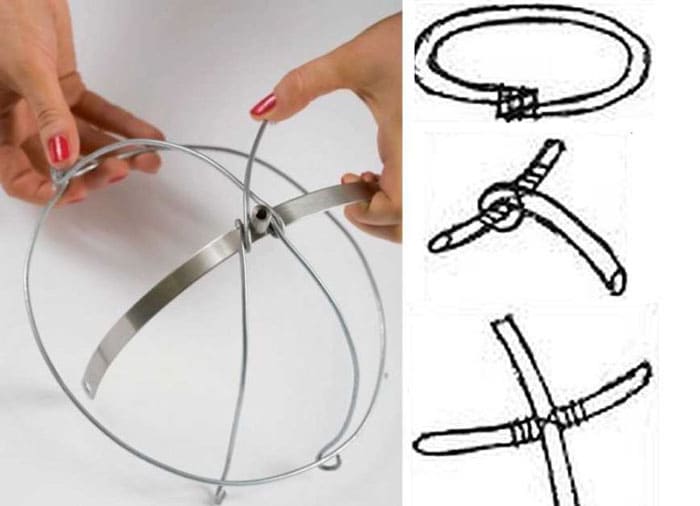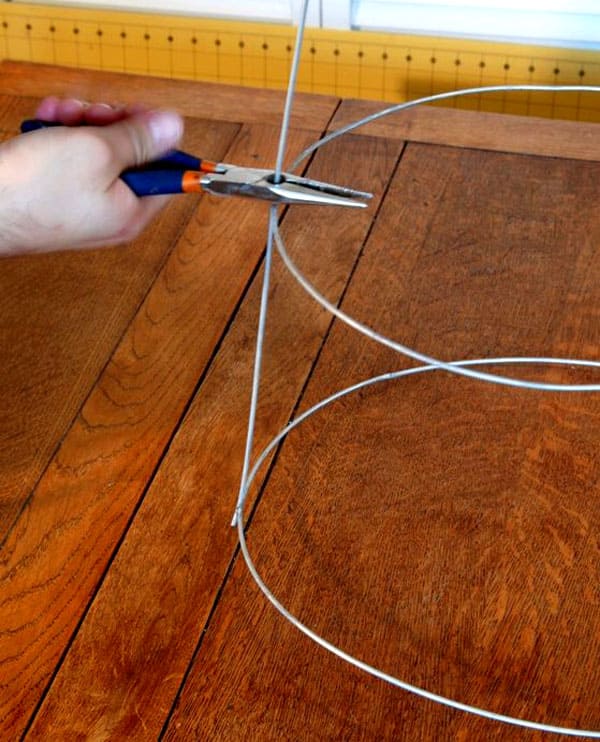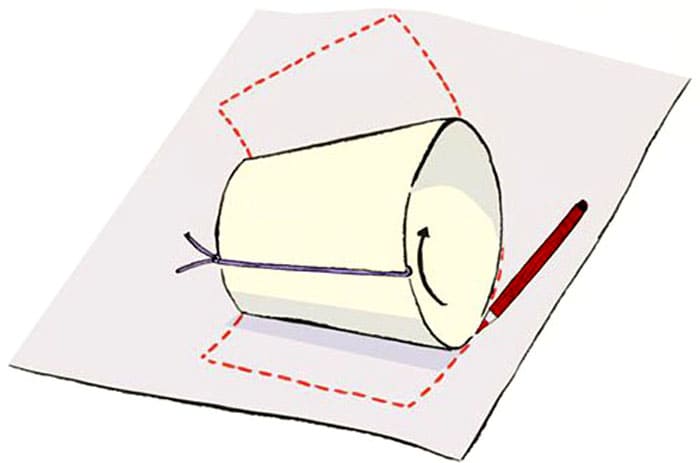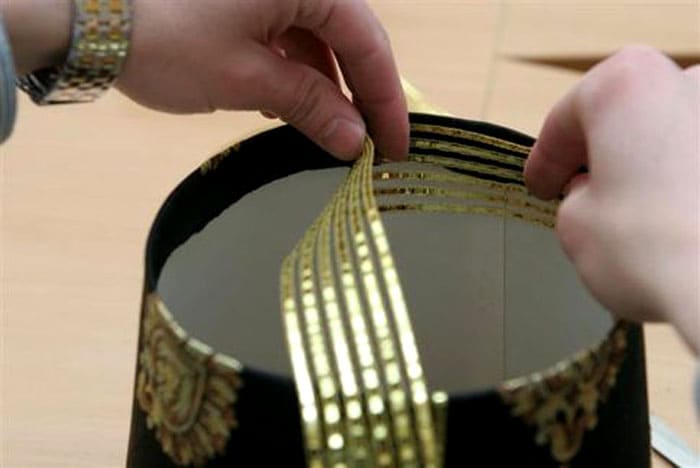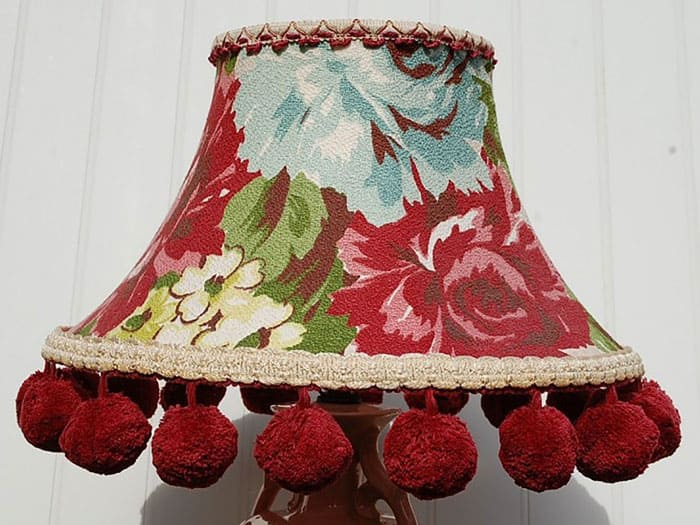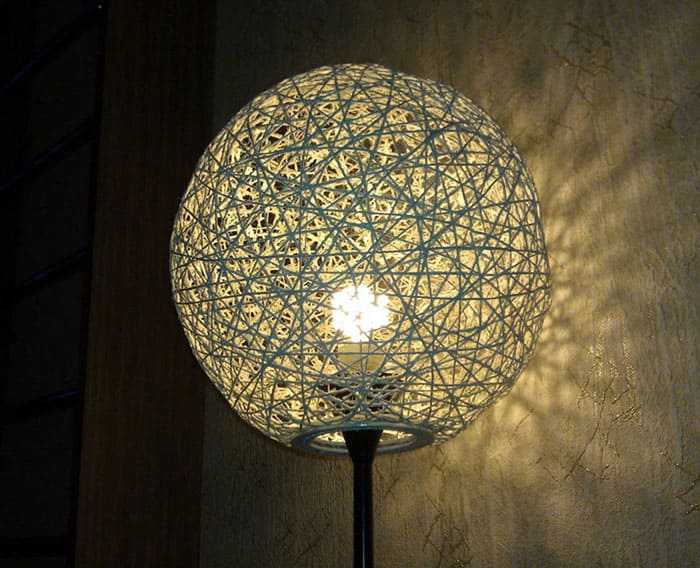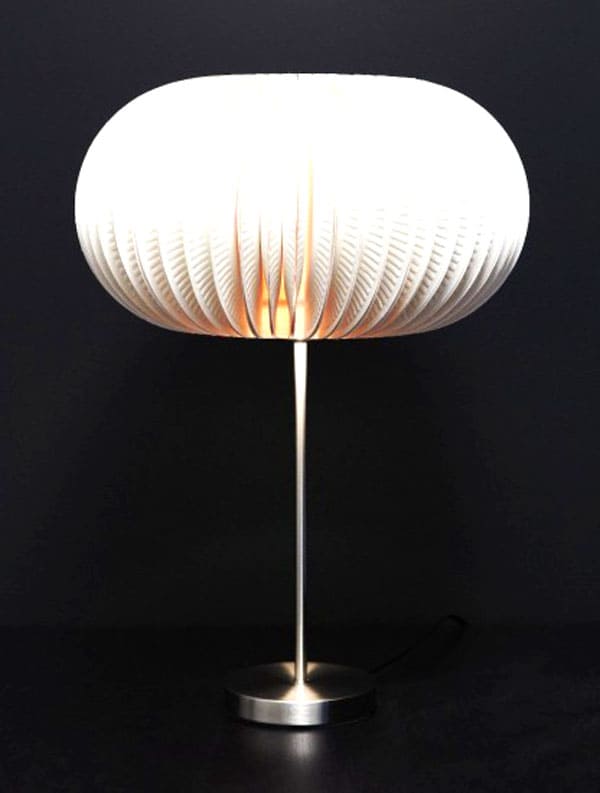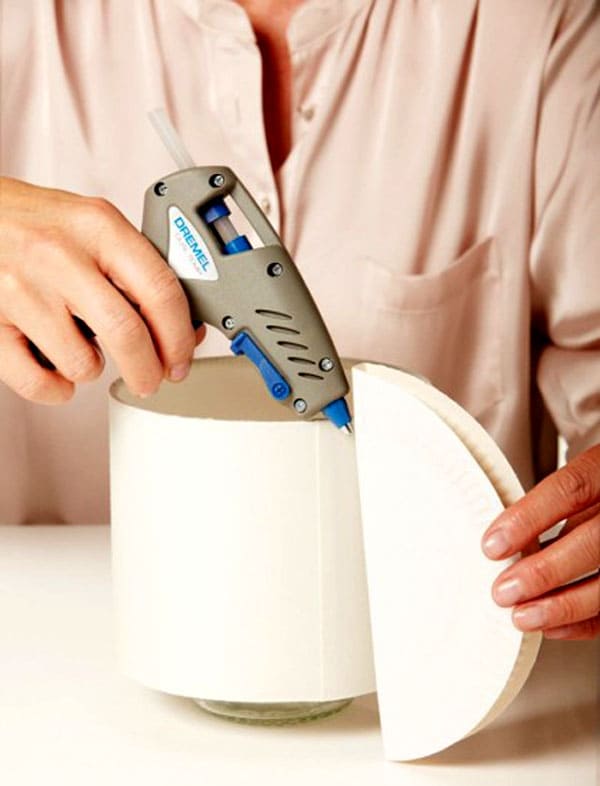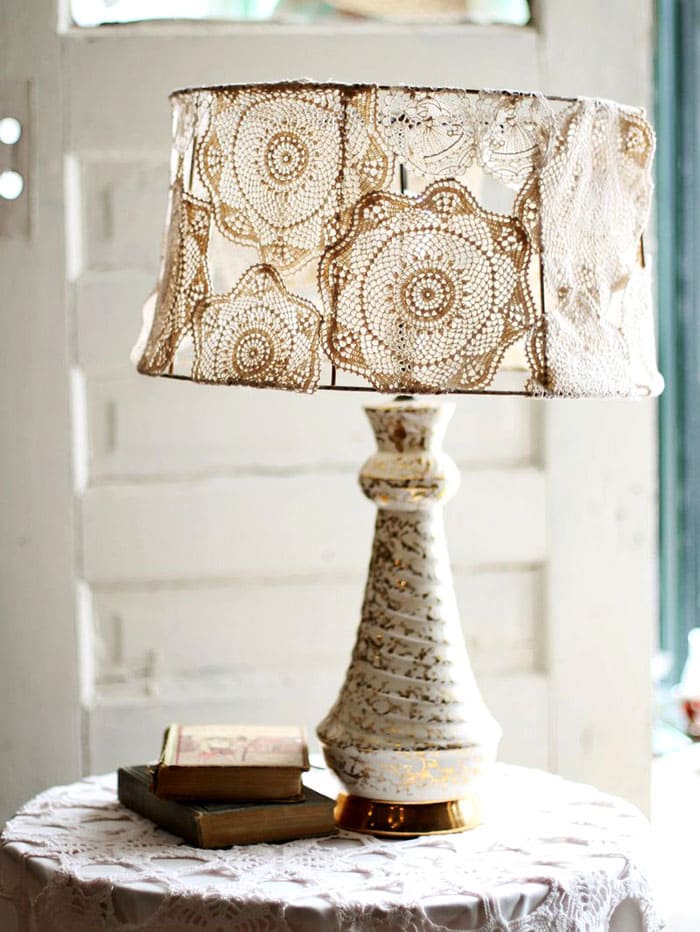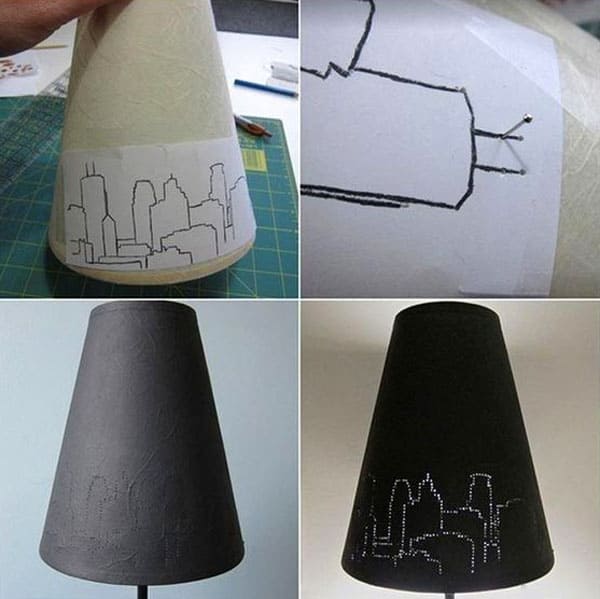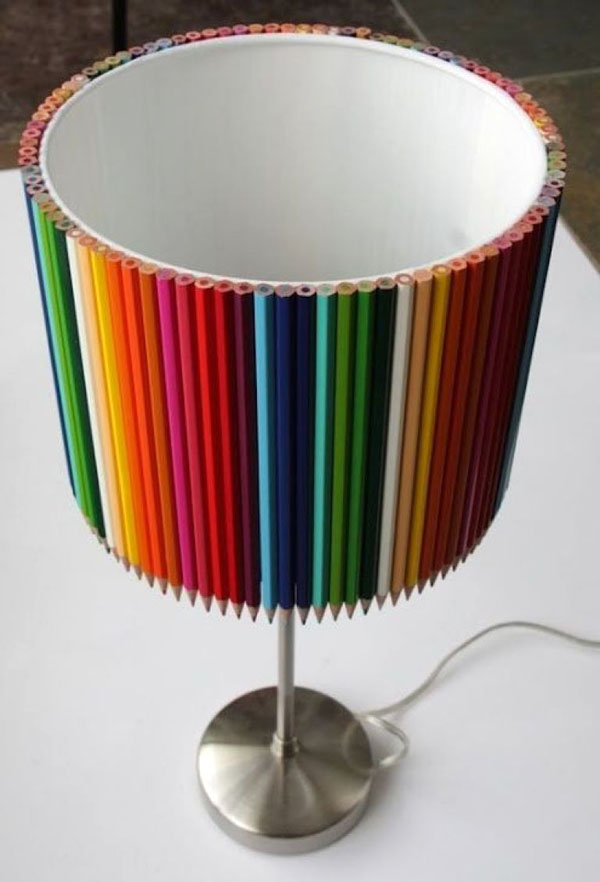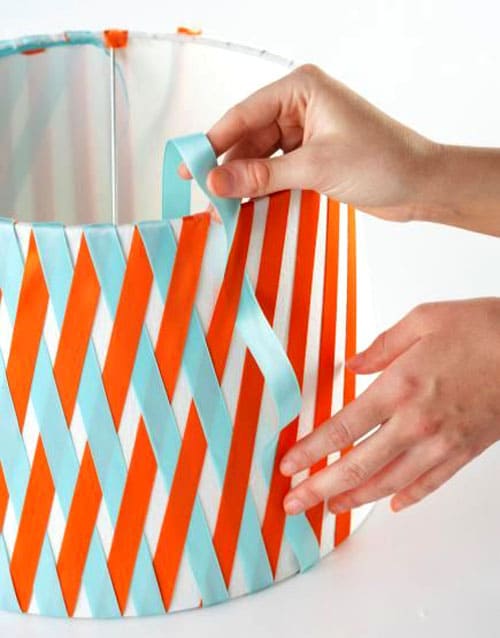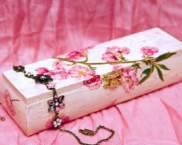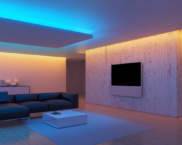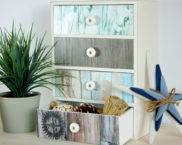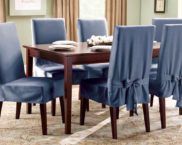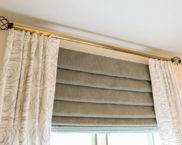The comfort of your beloved home with your own hands: how to make a beautiful lampshade
Any interior without proper lighting will turn out to be losing and boring. The ratio of light and shadow should transform the room, make it cozy and beautiful. You can play with light and shadow if you make a lampshade with your own hands. It will be a unique product that will perfectly match your interior. And how to create a lighting miracle, the editorial office of homemaster.techinfolux.com/en/ will tell you.
The content of the article
Step one: making a frame for a lampshade
The best and simplest thing to do is to use an old lighting fixture. The previous lampshade needs to be removed, and its frame should be taken as the basis for your own creation. If you take an old floor lamp or sconce, then the question of how to make a frame will disappear
If you want to take an old lamp, then the frame must be carefully examined: any abrasions that should not be according to the new plan must be painted over. You can immediately change the color scheme to match the new lampshade.
What the frame can be made of:
- Get the cheapest lamp and use it as a base.
- Waste baskets can be easily converted into a lampshade, whether they are natural, plastic or wire.
- Anyone who is not alien to carpentry will easily cope with a wooden frame.
- Any solid base can be weaved from wire.
- Large-volume plastic containers and bottles can be adopted.
If the choice fell on a wire, then we choose a bendable and durable one. Aluminum is suitable as a material, and copper, or galvanized steel wire of small diameter. When working with steel wire, you need POS-40 solder, "soldering acid" and the soldering iron itself. If you do not have one, you can use wire cutters and pliers for fastening. But all this can be replaced with a decent superglue.
We take the wire with a small margin for connections.On average, three rings are made for a typical lampshade: two for the base itself and one small for the bulb holder. For strength, a small ring is additionally wrapped with a thin wire and closed with twisting and superglue.
Now you can attach the chuck hanger. These are two hinges that catch the ring and connect to the upper large ring of the lampshade.
We connect large rings with ribs using pliers. There can be any number of edges. But a large number of racks will provide excellent shrinkage of the material decorating the product.
Advice! Whoever has a welding machine is the most fortunate. Such a frame can be made quickly and easily, subject to the ability to work with this device.
Master class on making textile lampshades
You can take a variety of textile materials: any fabric, from thin, light to denser.
If you use transparent or thin fabric
Refreshing the shade is not so difficult if you have transparent or thin fabrics at hand. It is a pliable material that can be easily secured to the rings of the lampshade, even with a stapler or thread and a needle. You can even use a hot glue gun.
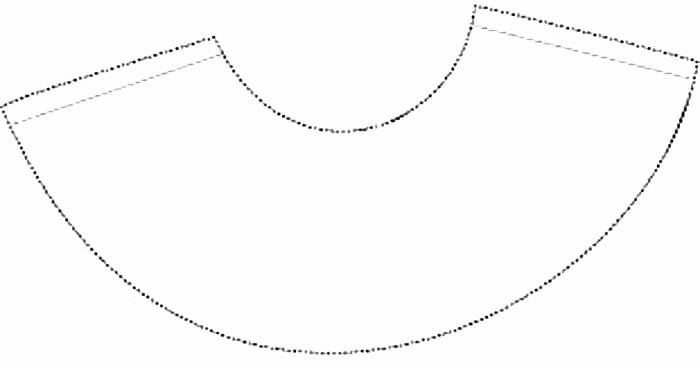
First, you need to draw a layout on old wallpaper or newspaper. We'll have to navigate our frame blanks. A centimeter tape will help with this.
What you need to measure: the height of the rib, the girth of the lower and upper rings (squares, if your workpiece has corners) and add a few centimeters to the connections.
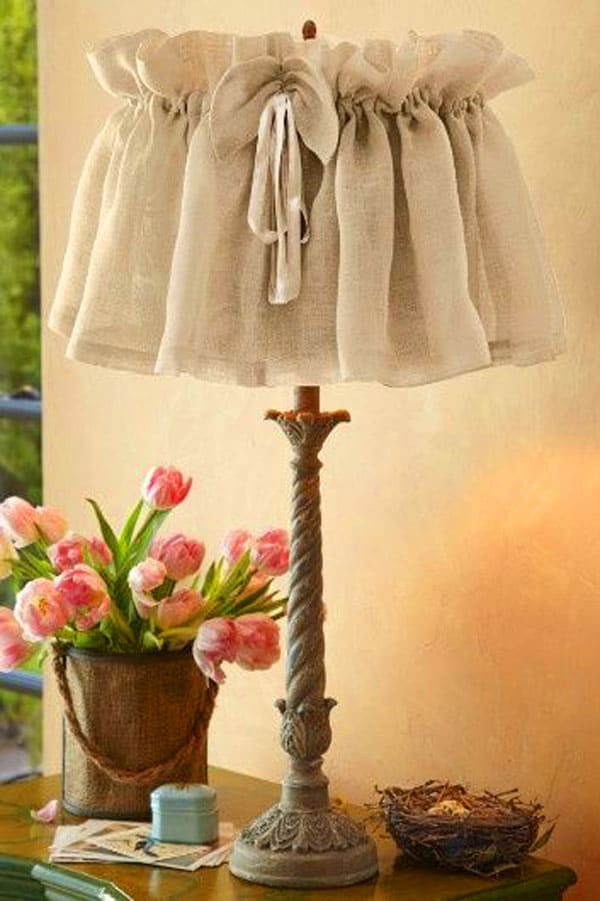
Thin burlap-like fabric becomes a chic material for plafond decor. It is enough to arrange the lower borders of the product and collect the fabric on top
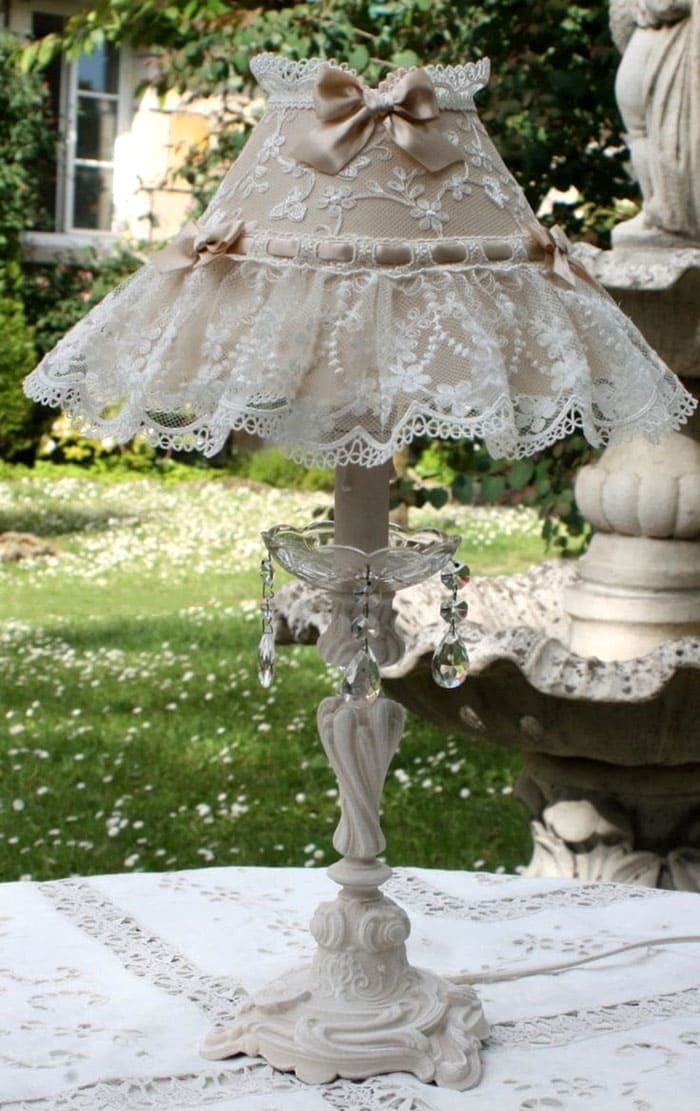
The lampshade can be sewn right away and lace can be added to it as a decoration. Then fasten everything to the wire
As a fastener, you can sew several ribbons along the top edge and tie them to the frame. And it is possible to act differently: we gradually fold the edges left for the connection inward, gluing them onto hot glue.
Advice! If you work with glue, it is convenient to use ordinary clothespins as clips.

You can go for a trick and use a small ready-made light curtain. It turns out a lampshade that gives home comfort and warm gentle light.
Thick fabric
It is a little more difficult to work with dense fabric than with light fabric, but there is no fundamental difference in the assembly method. If light fabrics can be simply glued or stitched by hand, then you need to work more thoroughly with dense fabric.
You can make a beautiful shade from the same elements by stitching them together and collecting them into a beautiful shade. It is best to decorate products with pom-poms, ribbons, textile flowers or lashes with beads, depending on the design idea.
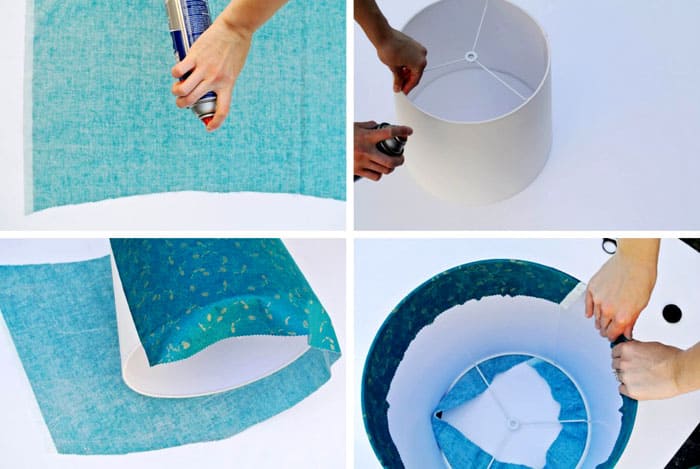
Dense fabric is tried on very responsibly: it will not work to hide flaws, as is the case with light matter.
We use threads
Quite an old way of making a lampshade, which is always relevant. Any dense thread is used for it. Iris is perfect. The color can be any, so it is better to immediately focus on the interior of the room. You can take several colors, you get a colorful product that lets in a mysterious light.
What do you need:
- cling film or large plastic bag;
- any cream;
- good PVA glue or WB-29 from TYTAN Professional;
- a bowl for glue;
- inflatable ball;
- threads.
On the inflated ball (you can take an old unnecessary ball), draw two circles: one smaller than the cartridge, and the second for the light to escape.But if the cover is large enough, then the lower hole can be omitted.
Wrap the ball with a film and grease the surface with a cream (a thin layer). This will then help to remove the cover without deforming it and without experiencing difficulties.
Now we pour the glue into a bowl (it is even permissible to dilute PVA with water in proportions 1: 1). We pass the thread through the glue and wrap the ball. Ignore the area with the chuck hole.
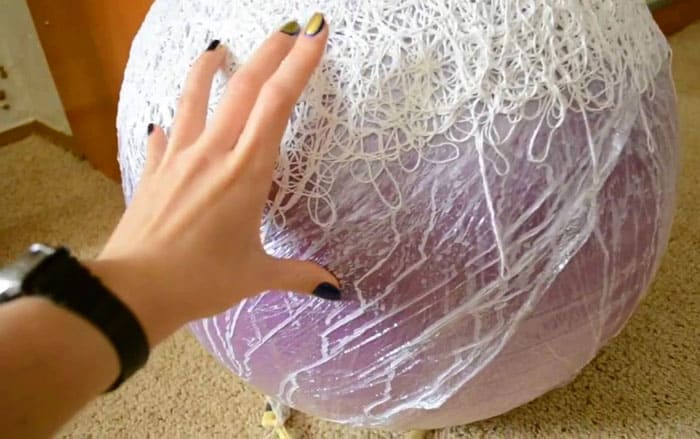
You can pass the threads through the glue and wrap them chaotically, in a loop-like manner, in a certain order - all at your request
After 6-7 hours, the product usually dries in a warm place, but it is better to wait 24 hours. Now we just pierce the ball and release the air from it. The film will immediately lag behind the threads, just take it out and get a beautiful shade.
The main thing is that there are no glue residues, but if they are in some places, remove them with tweezers or by hand.
Advice! If you pour glitter into the glue, then they will stick to the lampshade tightly with glue, adding shimmer to it.
Do-it-yourself lampshade from paper materials
Wherever paper is not used! So why don't we make an interesting lampshade out of it? It will not be durable, but you can do something new every time and surprise yourself and your guests.
Paper and cardboard
The paper from which the original shade can be made can be any, depending on the desire and the expected result. Paper lampshades are brought to mind with the help of paints, scissors, decorative gizmos, varnishes. You can make a lampshade using the papier-mâché technique by tearing pieces of newspaper and sticking them layer by layer for several days on the desired shape, not forgetting to leave space for the cartridge. When the plafond is completely dry, it is painted, if necessary, sanded, and painted again. Such a product can be painted in the most amazing way.
What else can you do?
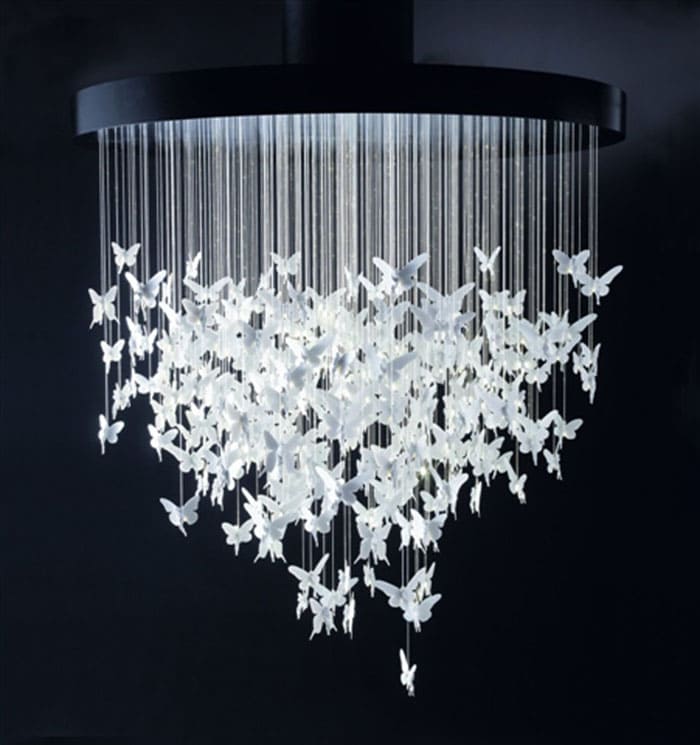
They make lampshades of amazing elegance from threads and butterflies. It is easy to get a lot of butterflies if you buy a curly hole punch
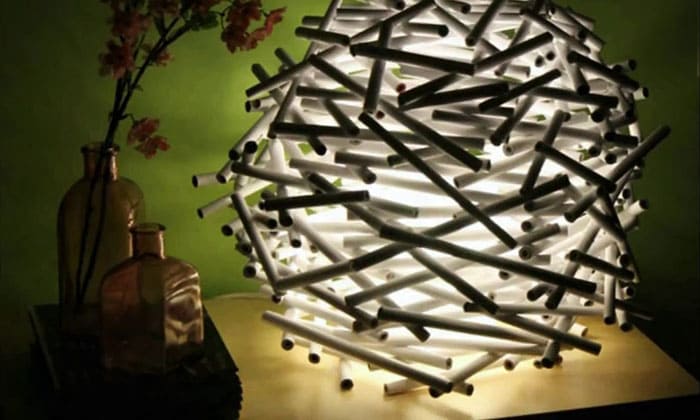
From paper or newspaper, you can wind tubes of different or the same size. With the help of glue (hot, supermoment, titanium) they are collected in the form of a plafond
To keep the tubes in shape, they are first glued on top of each other around an object of the desired shape.
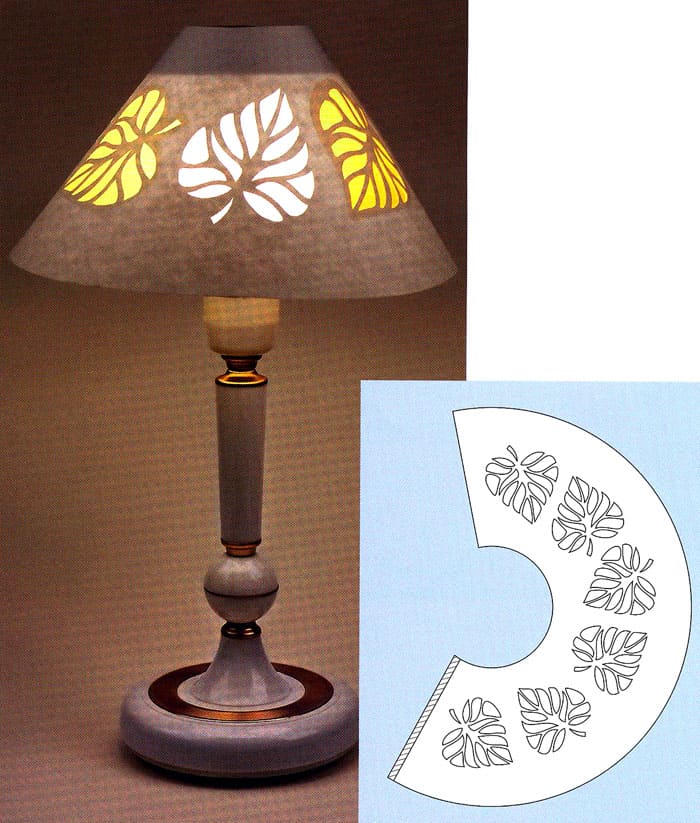
On whatman paper, you can draw a shade and cut different patterns with a sharp paper cutter. This is a very interesting foundation for creativity.
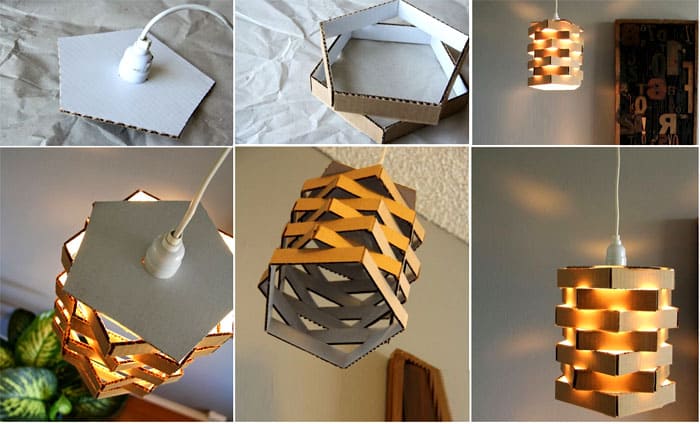
It is easy to turn cardboard strips into a figured light. Hot glue or furniture stapler will help in fixing
If you use whatman paper as a regular lampshade, then it will need to be decorated. Even a dried herbarium will be a wonderful decoration in eco-style. The dried sheets and twigs are glued and covered with a transparent varnish.
If there is no great desire to be wise, it is easier to take a beautiful wallpaper and make a plafond from them. In addition, such a product is easy to decorate with ribbons around the edges, braid or artificial flowers.
You can make an accordion lampshade from the wallpaper if you fold them like a fan. For the structure to be fixed, holes are made in the upper part with a hole punch and a wire frame is pulled along them.
Paper plates
Disposable tableware is very inexpensive. You can purchase a large number of paper plates and make a stylish shade out of them.
What you need to work
We will immediately prepare everything you need to sit down and calmly do something useful and enjoyable.
What you cannot do without in creating a plate shade is without a glue gun with a supply of glue rods, a base frame, a base for a lampshade and at least 50 pieces of plates of the required diameter. The work will need a ruler and a pencil.
Manufacturing instruction
The work as a whole is not difficult. All the care is to fold the plates and stick them onto the base.
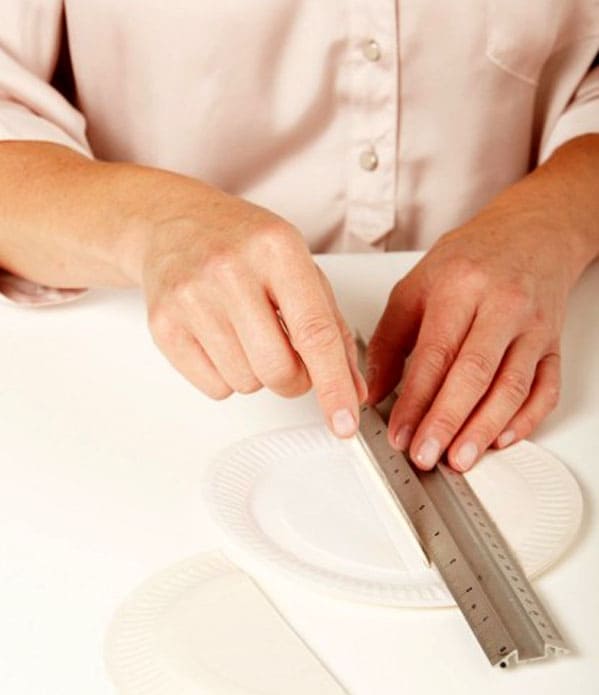
In the center of each plate, draw two parallel lines, 0.5 - 1 cm apart. Along these lines, we fold the plate in half, receiving a strip for gluing in the center
We continue to manipulate each plate and collect our lamp.
Ideas for making lampshades from scrap materials: what else can you take?
It's not for nothing that people with creative thinking are able to create beauty literally out of nothing. But no one says that for this you need to specially study somewhere. In many of us, the dreamer and the dreamer sleep. So why not wake him up and ask him to come up with something original?
In the meantime, you can spy on ready-made lampshade ideas from different materials.
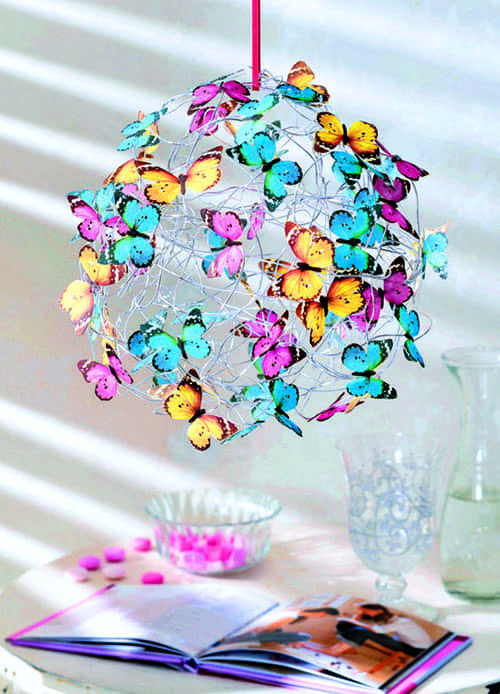
Butterflies, printed on a printer, or bought in a store will be a very cute decoration for the plafond
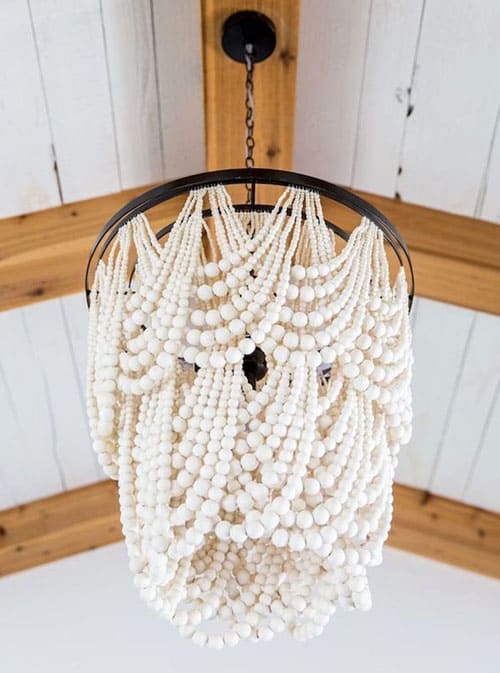
If you have a lot of different beads, or you have purchased a large set and do not know what to do with it, try turning them into a chic lamp.
What other materials are good for making a homemade lampshade? In addition to textiles and paper, bugles, plastic, glass, tree twigs, and items of clothing are used. For example, making a plafond out of children's skirts is very simple: you just need to put the skirt on the frame and the lamp is ready!
Look around, perhaps some material asks to wrap the light bulb with a special blanket and create that very romantic play of light and shadow especially for you? We are waiting for your master classes!



